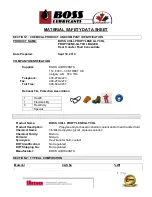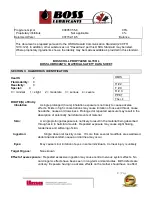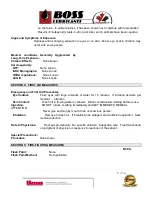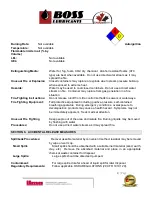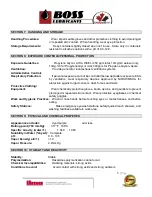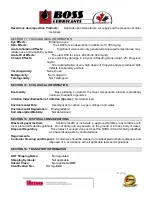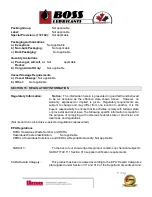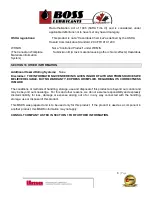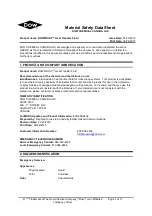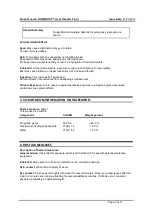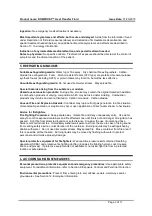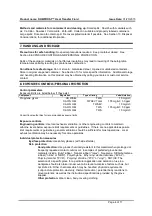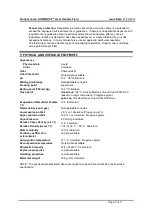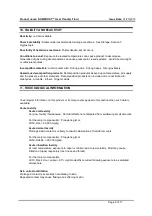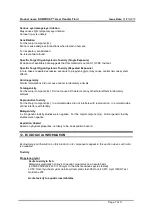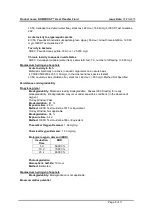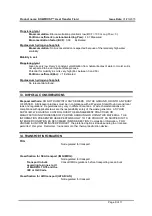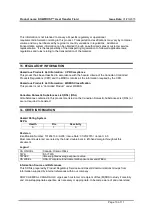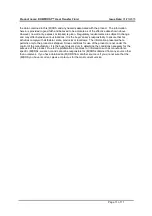
Product name: DOWFROST
™
Heat Transfer Fluid
Issue Date:
01/23/2015
Page 5 of 11
Respiratory protection:
Respiratory protection should be worn when there is a potential to
exceed the exposure limit requirements or guidelines. If there are no applicable exposure limit
requirements or guidelines, wear respiratory protection when adverse effects, such as
respiratory irritation or discomfort have been experienced, or where indicated by your risk
assessment process. In misty atmospheres, use an approved particulate respirator.
The following should be effective types of air-purifying respirators: Organic vapor cartridge
with a particulate pre-filter.
9. PHYSICAL AND CHEMICAL PROPERTIES
Appearance
Physical state
Liquid.
Color
Colorless
Odor
Characteristic
Odor Threshold
No test data available
pH
10.0 50%
Literature
Melting point/range
Not applicable to liquids
Freezing point
supercools
Boiling point (760 mmHg)
152 °C
Literature
Flash point
closed cup
104 °C
Pensky-Martens Closed Cup ASTM D 93
(based on major component), Propylene glycol.
open cup
Cleveland Open Cup ASTM D92
None
Evaporation Rate (Butyl Acetate
= 1)
<0.5
Estimated.
Flammability (solid, gas)
Not applicable to liquids
Lower explosion limit
2.6 % vol
Literature
Propylene glycol.
Upper explosion limit
12.5 % vol
Literature
Propylene glycol.
Vapor Pressure
2.2 mmHg
Literature
Relative Vapor Density (air = 1)
>1.0
Literature
Relative Density (water = 1)
1.05 at 20 °C / 20 °C
Literature
Water solubility
100 %
Literature
Partition coefficient: n-
octanol/water
no data available
Auto-ignition temperature
371 °C
Literature
Propylene glycol.
Decomposition temperature
No test data available
Kinematic Viscosity
43.4 cSt at 20 °C
Literature
Explosive properties
no data available
Oxidizing properties
no data available
Molecular weight
76.9 g/mol
Literature
NOTE: The physical data presented above are typical values and should not be construed as a
specification.



